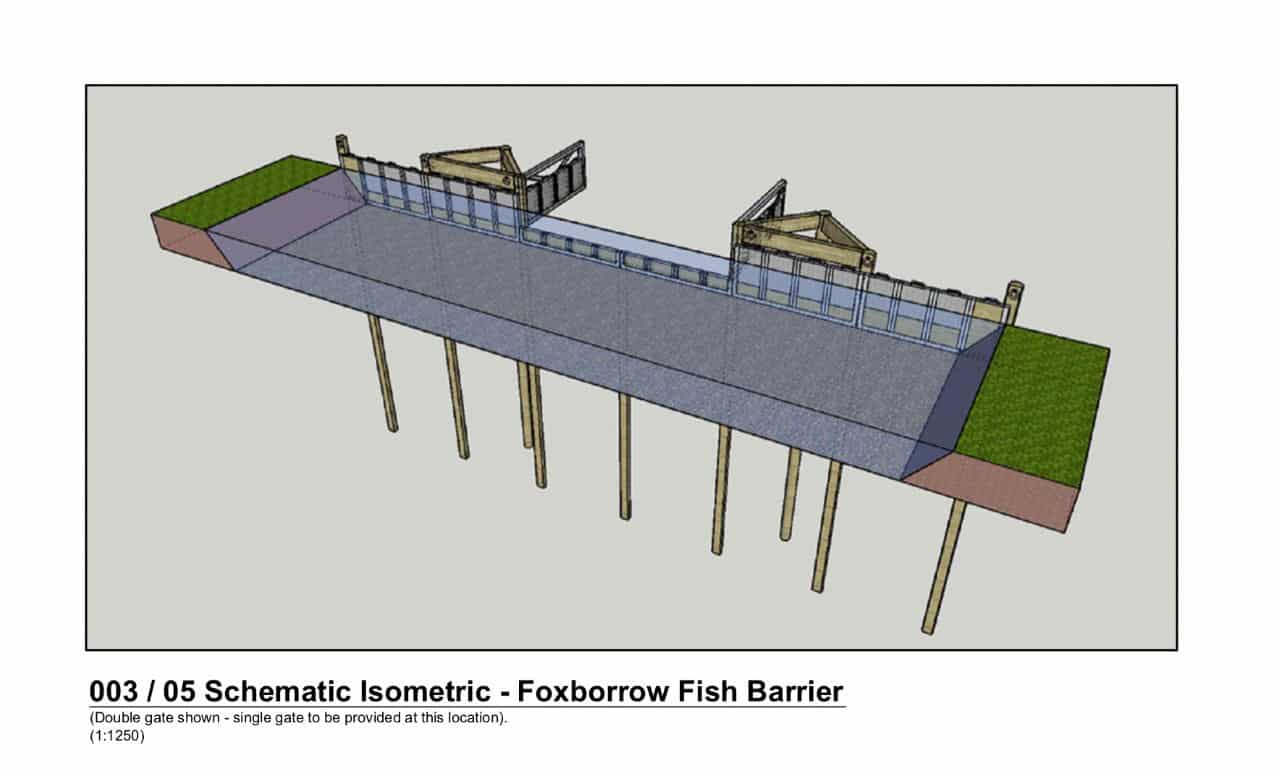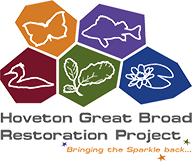Biomanipulation
Science Officer Overview

What is biomanipulation?
Biomanipulation is a term for adding or removing species from an ecosystem to achieve a positive change in the environment. On the Hoveton Great Broad project we are planning to biomanipulate the fish community to achieve clear water conditions suitable for aquatic plant (macrophytes) recovery.
Why is biomanipulation required?
Biomanipulation is required because historic water pollution introduced excess nutrients (eutrophication) into the Broads resulting in algal blooms and murky (turbid) water. This turbid water blocks sunlight reaching the lakebed which prevents aquatic plants from growing. Aquatic plants are the foundation of a healthy lake and their absence, and the increased algae, has impacts on all the lake wildlife. This includes favouring fish species which can tolerate and exploit these conditions, resulting in a simplified fish community dominated by species such as bream and roach. This fish community, through their feeding behaviours, promotes the conditions for continued high levels of algae helping maintain the turbid water.
Zooplanktivorous fish, such as roach, predate upon zooplankton (small organisms such as water fleas) which feed on algae. By predating the zooplankton, in particular the larger species, they reduce the number of algae eaten. Benthivorous fish, such as carp and bream, are bottom feeders that re-suspend the sediment creating turbid water and releasing sediment nutrients into the water. They can also physically uproot and damage macrophytes.
By temporarily removing a large proportion of this fish community we can reduce re-suspension of sediment nutrients and predation of zooplankton. This will decrease algae numbers and turbidity, switching Hoveton Great Broad and Hudson’s Bay into a clear water state, allowing aquatic plants to recover, and a healthy lake wildlife community to return.
If you want to read more about the impact of eutrophication on fish communities, and the role of zooplanktivores and benthivores on lake condition, you can read our “Hoveton Project: creating a sustainable future for the Bure system” report in the science section of this website.
Biomanipulation in the broads
There is a long history of biomanipulation in the Broads and work here, and elsewhere, has shown that whilst biomanipulation of a sufficient magnitude almost inevitably produces clear water, the difficulty has been in maintaining this change. Maintaining low nutrient levels, management of fish populations, and the establishment of aquatic plants are key to the long-term sustainability.
These biomanipulations provide some key lessons for re-establishing ecological functioning and internal stabilizing mechanisms. These include:
- Abundance of macrophytes can establish rapidly within around 5 years.
- Stability of biomanipulation improves with macrophyte diversity, with more than 10 species normally required for stable clear water and macrophyte community
- Manipulation of the fish community throughout macrophyte recovery increases the prospects of achieving the desirable end community, a high piscivore:zooplanktivore ratio, which is a feature of macrophyte dominated systems.
- Annual mean total Phosphorus (a key nutrient for algal growth) concentrations of less than 55μgl-1 are likely to be required to maintain a stable system.
These lessons have informed the projects approach to the biomanipulation of Hoveton Great Broad and Hudson’s Bay. If you would like further information on biomanipulation within The Broads you can read; ‘A review of lake restoration practices and their performance in the Broads National Park 1980-2013’ on the Broads Authority website.
How will you carry out biomanipulation?
To enable biomanipulation of the fish community fish barriers are being installed on Hoveton Great Broad and Hudson’s Bay to prevent fish entering from the River Bure and adjacent marsh dykes. The three large barriers being installed on Hoveton Great Broad will be constructed out of metal screens, with 2mm gaps, which will allow water flow to the River Bure but will prevent fish movement. Fish naturally move in and out of HGB and HB, and the aim is to install the barriers when the fewest fish are in Hoveton Great Broad and Hudson’s Bay.
Once the barriers are installed, biomanipulation will commence, relocating more than 75% of the total weight of fish within Hoveton Great Broad and Hudson’s Bay to the River Bure. A variety of fish removal techniques will be used to remove the fish, using the highest welfare standards, and with the agreement of the Environment Agency. This relocation will focus on fish such as roach and bream which currently dominate the community and have been shown to maintain the current poor conditions. Further fish removals will be undertaken every 3 years to prevent recruitment of zooplanktivores and benthivores that remain within Hoveton Great Broad and Hudson’s Bay. This is likely to include manipulation of the fish community to increase the prospects of achieving a favourable fish community, a high piscivore (i.e. pike and perch) to zooplanktivore ratio, as seen in macrophyte dominated lakes in the Broads.
Hoveton Great Broad and Hudson’s Bay are not isolated lakes, and their connections to the wider system play an important role in their natural functioning. Therefore, their isolation from the River Bure to enable restoration will be temporary (~10 year). When a stable and diverse macrophyte community is achieved the fish barriers will be removed, reconnecting these broads to the River Bure. The restored broad should support a more diverse fish community typical of healthy broad habitats.

Benefits of biomanipulation
Over what is expected to be about 10 years, a diverse community of aquatic plants will return to Hoveton Great Broad and Hudson’s Bay and wildlife will start to flourish once more. A thriving aquatic insect community will re-establish, with more aquatic plants and invertebrates providing feeding opportunities for a host of other wildlife. A diverse fish community will thrive, one based on a healthy functioning habitat and which is more resilient to the potential impacts of climate change. Bream and roach will still form an important part of this fish community but are likely to be in lower numbers due to improved habitat quality and increased numbers of piscivores. However, reduced competition within the bream and roach populations and a healthy lake ecosystem should support larger individuals.
The acid test of the project will come when Hoveton Great Broad and Hudson’s Bay are reconnected to the River Bure. Restoration of healthy and diverse aquatic environments in these broads will restore internal stabilising mechanisms. For example, increased pike and perch will keep down zooplanktivore numbers, and aquatic plants will provide refuge for larger zooplankton, therefore maintaining the grazing of algae and preventing re-establishment of turbid conditions. Increased aquatic plants will help stabilise the lakebed, and in combination with decreased benthivores will reduce the re-suspension of sediment and nutrient release which can promote algal blooms. It is anticipated that such internal stabilising mechanisms will enable the restored ecosystem to persist when reconnected to the wider system. If so, the project will have provided a major step in demonstrating that large scale lake restoration in connected habitats is possible without permanent isolation.
Reconnecting Hoveton Great Broad and Hudson’s Bay to the River Bure will bring additional benefits to the wider Broads, acting as refuge for wildlife and a source of biodiversity to recolonise other sites.
